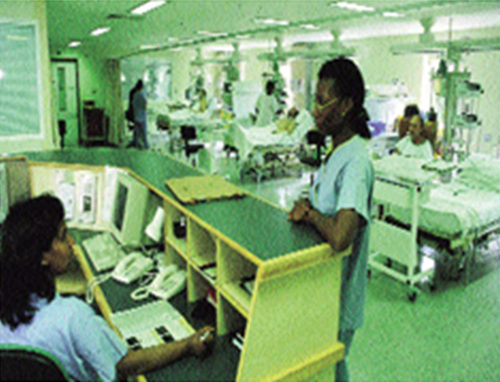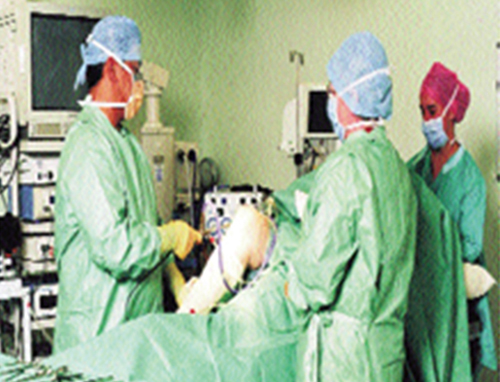
All polluted countries suffer from a major un-employment, people are unable to work because of the appalling conditions that have… generally through no fault of their own… wrecked their livelihoods and economies.
This situation needs to be turned around by engaging them to assist with cleaning up the pollution as properly paid, structured workto earn a living, feed their families, whilst gradually returning to a normal way of life and creating new prosperity.
EnviroRep is the catalyst to make it happen. We have a wide range of highly experienced Partners, available to help the beneficiary country. Between us, we can train the local people to safely operate the equipment, drive the boats and Govercraft, use the available compression and shredding machinery and as funds allow, from donations and the sale of recovered materials, albeit contractual arrangements need to be agreed, contribute towards the costs.
In general, dealing with Historic and new pollution is a mammoth task that will take many years and the cost is high, but the rewards are huge as the beneficiary country regains farming, fishing and cottage industries that will grow as they mature. To keep within budget, success is dependent on “Aftercare”, thus we have in place, additional services that are necessary to assist with Animal husbandry, Veterinary methods of keeping livestock healthy, see below and much more by working with our international Partners. We cannot do it alone, everybody needs to be involved to guarantee continued success in the shortest possible time.
Once the Cottage Industries such as farming, smallholdings, fish farms etcetera are underway, you need to keep them healthy and profitable so they can grow… Read on;
Ozone is well suited to a veterinary clinic application. It’s an extremely effective oxidant, lethal to all bacteria and viruses and has a variety of uses for hygiene and sanitation. The use of ozone shows an important progression in the field of disinfecting, sterilisation and deodorisation, because it is a natural gas, which uses no chemicals and leaves no dangerous chemical residue, making it the most healthy and effective alternative to chemicals. In a clinic setting, the main medium of contagion by infectious diseases is the air. The animal who is ill is a carrier of bacteria, which will affect healthy animals and they deposit bacteria on the floor, clothing and furniture. Not only does this pose a health risk to the veterinary staff and visitors of a clinic, but to the animals themselves whose recovery may be set back by contracting new viruses or bacterial growths. It is therefore obvious that the sterilisation of the airin any clinic setting is vital to the health of the animals, staff and visitors and so to the running of the clinic. Tests on Ecoli, L. Pneuniophila, Staphauraeus, MRSA, Shigellasp, Salmonella arizonae and Legionella show thatozone gas is a highly anti-bacterial agent, with more than 90% kill rates after 40 minutes, 99.9% kill rates after 6 minutes and 100% kill rates after 2 hours to be decided.



Ozone is generated during a thunderstorm when a high voltage electric discharge passes through the air. The oxygen molecules convert into ozone and produce three atoms of oxygen instead of two. Now you can have your own “lightening in a box” and enjoy the benefits of ozone without waiting for another thunderstorm! Simply plug in one of Hydrozone’s electronic units and switch on. That’s it! Each unit has a built in fan which draws ambient air in one end, converts it into ozone and releases out the other. When it is faced with odours, bacteria or viruses it destroys them completely by oxidation. In so doing, that extra atom of oxygen is also destroyed leaving nothing… no odour… no bacteria… no virus, only pure natural oxygen. For more detail, please contact; info@envirorep.com
Ozone is well suited to a hospital, clinic or ambulance applications. It’s an extremely effective oxidant, lethal to all bacteria and viruses and has a variety of uses for hygiene and sanitation. The use of ozone shows an important progression in the field of disinfecting, sterilisation and deodorisation, because it is a natural gas, which uses no chemicals and leaves no dangerous chemical residue, making healthy and effective alternative to chemicals. In a hospital setting, the main medium of contagion is by infectious disease carried in the air we breathe. The patient who is ill is a carrier of bacteria, which will affect healthy people and they deposit bacteria on the floor, clothing, furniture and bandages of the patients. Not only does this pose a health risk to the staff and visitors of a hospital, but to the weakened patients themselves whose recovery may be set back by contracting new viruses or bacterial growths. It is therefore obvious that the sterilisation of the air in and hospital setting is vital to the health of the patients, staff and visitors and so to the running of the hospital. Tests on Ecoli, L. Pneuniophila, Staphauraeus, MRSA, Shigellasp, Salmonella arizonae and Legionella show that ozone gas is a highly anti-bacterial agent, with more than 90% kill rates after 40 minutes, 99.9% kill rates after 60 minutes



Following the removal of invasive vegetation from affected lakes and rivers, lack of sunlight, fresh rainfall oxygen and nutrients leaves the water in a poor, often stagnated condition that is not supportive of healthy fish stocks.
Flowing rivers will recover more quickly providing they’re not oil polluted from oil leakage upstream and the recovery of lakes is dependent on the quality of water from incoming water courses should they be replenished this way, thus such problems must be initially addressed. How this is done is covered in the subject of “Water Reparation” in this website, which mentions fish farming. This section aims to provide additional insight into real possibilities.
In tropical locations, the wet season will purify the rivers and lakes quickly, and is the ideal time to introduce fresh water fish farming. (Sea, [saltwater] fish farming is done the same way).
Unfortunately, “Fish Farming” conjures up a vision of large commercial enterprises, and although projects can grow, it doesn’t need to start this way. Most successful ventures begin small but the key is to start by selecting the right fish for what you want to do, and understanding their habitat needs.
There are a range of options to consider, Fish for food… Fish for stocking private ponds and streams… Fish for fee paying anglers as a source of income from building a tourism industry, the opportunities are limitless.
To start, the whole lake is not required, good size purpose made “self-erect portable tanks” are available to contain the fish. The tank size and type will dictate the productivity of the project.
Envirorep can provide natural enzymes to be added to the water that will ensure the healthy growth and rapid reproduction of the fish, the project can then split into two different avenues; 1/ Release part of the fish stocks into open water where they can reproduce naturally, enzymes can be added to the lake water for a period of time to further assist reproduction as the lake recovers naturally to health. 2/ The retained fish can continue to flourish in captivity and form part of a new cottage industry providing community food. It is necessary that any re-contamination from invasive vegetation is dealt with immediately as and when it occurs. Dead fish should not be wasted, they can be recycled via the efficient decomposition techniques or Hi-Energy biomass production described in the “Land/Water Reparation” section of this website.
It is necessary that certain criteria are observed when selecting fish for farming, to name but a few; They need to be capable of reproduction in captivity, have numerous hardy eggs, adaptable to artificial feed, not be cannibalistic or territorial, have good eating qualities (be edible)…. thus, local research needs to be done applicable to the Country/location in question. Local knowledge should be sought from tribal Elders or those with memories of the past, the internet, books, subject studies etc, see example below.
There are hundreds of fish species in every country of the world and many different types of Catfish are common to all of Africa, with help from us all, success is guaranteed.
The above is offered as a brief start-up summary. For more information, costs and availability of equipment, fish species and supply of Naturally cultured (not genetically modified) biological enzymes to get all such projects off to a highly productive beginning, please contact info@envirorep.com
